Pulmonary embolism (PE) is a condition during which a blood clot gets stuck in the lung artery (also called the pulmonary artery). Blood clots that travel through the bloodstream until they get stuck are called an embolus, hence the name of the disease—pulmonary embolism.
The disease usually occurs when blood clots form inside leg veins. When clots form in the deep veins of the legs, it is called deep vein thrombosis (DVT), the most significant risk factor for pulmonary embolism.
The condition blocks blood from flowing through the lungs, where it should get oxygen. That’s why it can be life-threatening. Symptoms depend on how significant the blockage is and can vary from mild symptoms to chest pain and coughing up blood.
The disease is an emergency and should be quickly treated. If left untreated, it poses a great risk of death.
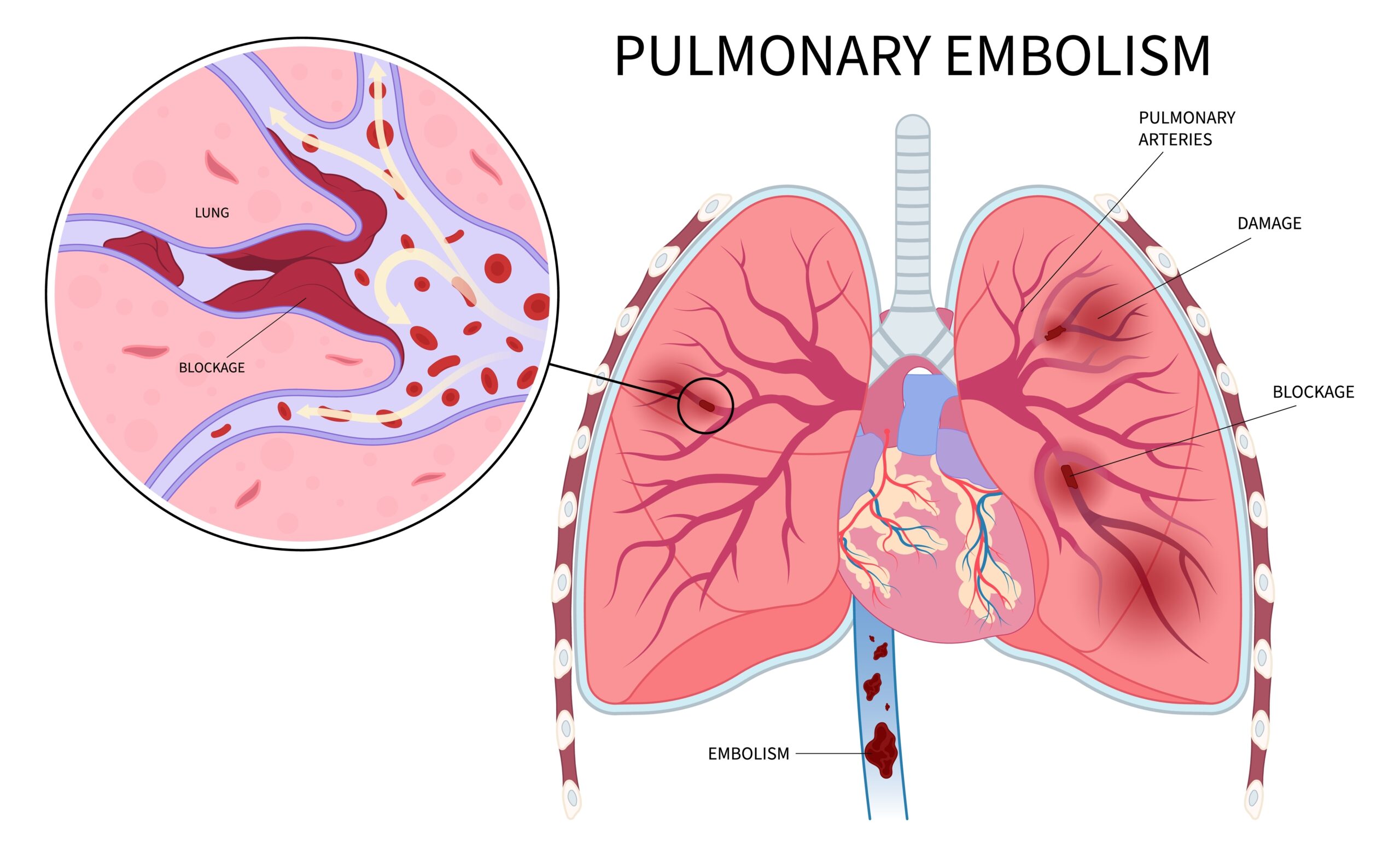
Every year, 60 in 100,000![]() people are affected by pulmonary embolism. In the United States, it causes around 30,000 deaths yearly. Therefore, it is one of the most common blood vessel diseases.
people are affected by pulmonary embolism. In the United States, it causes around 30,000 deaths yearly. Therefore, it is one of the most common blood vessel diseases.
A blockage in the lung artery causes a pulmonary embolism. It typically happens when a blood clot from the leg veins breaks free and travels through the body in the bloodstream.
Most blood clots that get stuck in the lung arteries originate from the deep veins of the legs. However, in some cases, they arise from the arm or pelvis veins. The disease in which blood clots form inside the deep veins of the legs is called deep vein thrombosis (DVT![]() ). It shouldn’t be confused with varicose veins, which is a disease involving veins on the surface. In that case, even when the blood clot develops in the superficial veins of the leg, it usually doesn’t lead to the blockage in the lungs.
). It shouldn’t be confused with varicose veins, which is a disease involving veins on the surface. In that case, even when the blood clot develops in the superficial veins of the leg, it usually doesn’t lead to the blockage in the lungs.
Rarely, pulmonary embolism can be caused due to factors other than blood clots. Those include:
Typically, symptoms of a lung blockage come on quickly. The most common ones include:
If you start feeling these signs, your life may be in danger. Get help from emergency services right away.
Some patients simultaneously experience symptoms related to deep vein thrombosis, which may include skin redness, swelling, pain, and leg warmth.
Depending on the extent of the condition, the symptoms may strongly suggest pulmonary embolism or resemble other conditions, such as pneumonia or heart attack.
The condition can be completely asymptomatic when it affects only small lung vessels. The severity of the symptoms also depends on the condition of the heart and vessels. People who have underlying heart conditions such as heart failure tend to experience pulmonary embolism more severely than healthy people.
In this disease, due to the closure of vessels with clots and, consequently, a reduction in the amount of blood flowing through the lungs, blood oxygenation is reduced, which leads to an insufficient supply of oxygen to all organs.
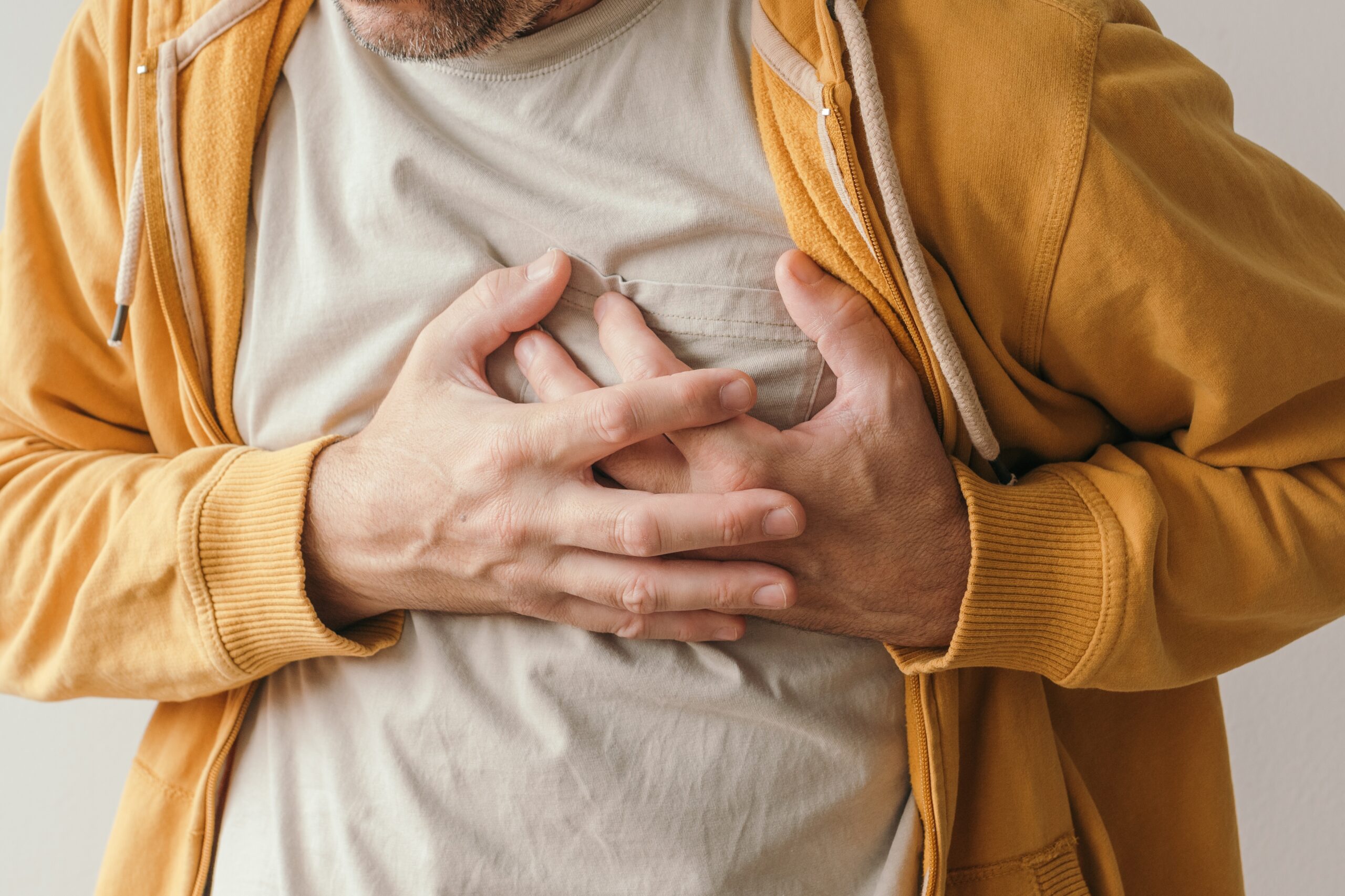
Some people are at a higher risk of getting pulmonary embolism than others. The most important risk factors include:
Deep vein thrombosis increases your risk of lung artery blockage, most significantly from all risk factors. During DVT, the blood clot is formed inside the deep vein of the leg. It happens due to conditions that lead to the occurrence of the so-called Virchow's triad:
If left untreated, a blood clot formed in the leg vein can break loose and flow with the bloodstream to the lung artery, where it gets stuck.
If you have thrombosis or experience symptoms that may suggest it (such as redness, swelling, and warmth of the leg), talk to your physician about ways you can prevent pulmonary embolism from happening.
Some other medical conditions may raise your chances of getting the disease. Those include:
Blood inside leg veins flows thanks to the working muscles. They work as a pump pushing the blood upwards. During long periods of inactivity, muscles aren’t working. Therefore, blood tends to stagnate in veins and doesn’t flow efficiently. Long periods of inactivity include bed rest, limb immobilization after a fracture, and long trips. Bed rest occurs after major surgeries, trauma, or during severe illnesses such as heart attack, stroke, or cancer.
Long flights typically force you to sit uncomfortably for many hours. Then, blood flow in leg veins slows down, and blood clots may appear, posing a threat of pulmonary embolism.
Doctors have various ways to determine if someone has pulmonary embolism. They start by looking at your symptoms and any risk factors you might have. Then, they do a physical check-up and ask for more tests.
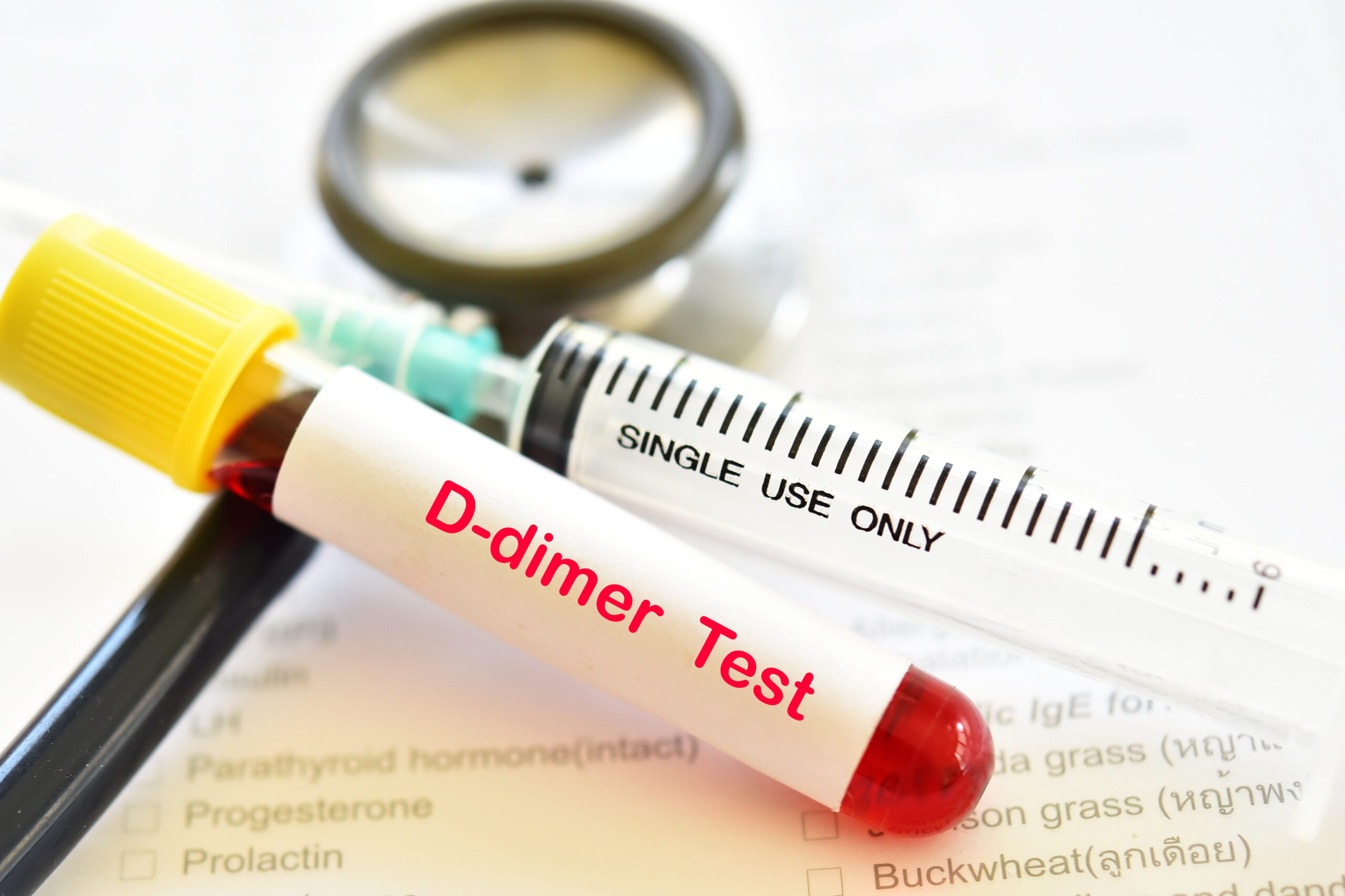
Treatment options include medications, surgery, and other medical procedures. Rapid treatment is essential to prevent complications and death.
Clot dissolvers are used in some cases of the condition. Small clots usually dissolve, and medications are used only to prevent them from getting more significant. However, when a clot is large and causes life-threatening symptoms, medicines that dissolve blood clots are given, usually directly into the lung artery. Those drugs are used only when necessary because they may cause severe bleeding.
If the condition doesn’t threaten life and the blockage is insignificant, treatment usually consists of blood thinners![]() , preventing the clots from forming and growing. In this scenario, the body breaks the clot, blocking the lung artery, while medications prevent the condition from worsening. Blood thinners may be injected or taken orally, depending on the type.
, preventing the clots from forming and growing. In this scenario, the body breaks the clot, blocking the lung artery, while medications prevent the condition from worsening. Blood thinners may be injected or taken orally, depending on the type.
When someone has blood clots blocking their lungs, doctors might do surgery like:
When pulmonary embolism is left untreated, it often leads to death. Experts estimate that around 30%![]() of people with lung artery blockage die if left untreated. When treatment is implemented, the death rate drops to about 8%. If the treatment is delayed, it can lead to lung or heart damage.
of people with lung artery blockage die if left untreated. When treatment is implemented, the death rate drops to about 8%. If the treatment is delayed, it can lead to lung or heart damage.
Preventing blood clots from developing and extending in your leg veins may prevent pulmonary embolism from happening. To achieve this, the following measures are used:
Pulmonary embolism can be a life-threatening condition and may lead to several complications, including:
Contact an emergency medical attention if you notice any disturbing symptoms that may suggest pulmonary embolism. Those include chest pain, sudden shortness of breath, coughing up blood, anxiety, and fainting. Pulmonary embolism can be a life threat and should be consulted with healthcare professionals as soon as possible.
If you have deep vein thrombosis, you can talk to your physician about possible safety measures to prevent PE, as thrombosis is the most significant risk factor.
Table of Contents

Thrombosis occurs when blood clots form inside blood vessels and partially or entirely limit blood flow. What are the symptoms?… read more »

A clot is a lump of blood clot. This process is the body's natural response to damage to blood vessels… read more »
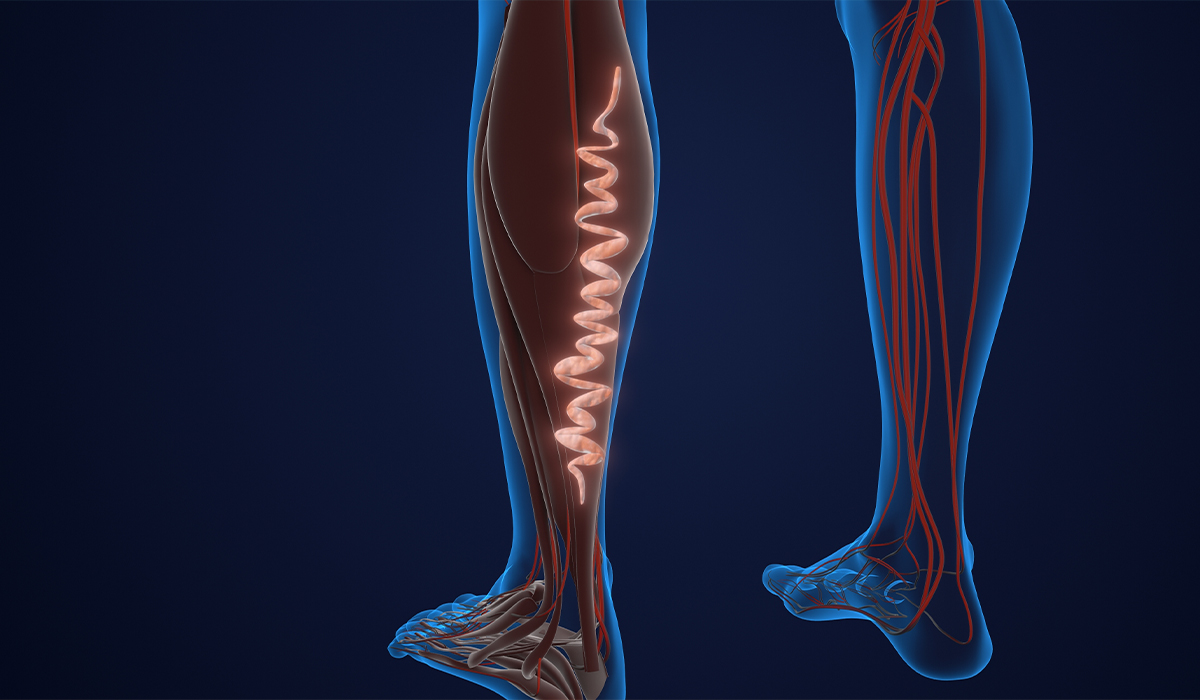
Varicose veins are large and twisted, ordinarily blue or dark purple. They customarily surface in the legs because blood must… read more »

Leg pain can have different causes and affect numerous people. The distress may well be mellow, throbbing, extreme, or show in one… read more »

Are you bothered by leg cramps? Find out what causes them. Learn about treatment methods and tips for this condition.… read more »

Chronic obstructive pulmonary disease, a condition commonly known as COPD, is the third most frequent cause of death in the… read more »
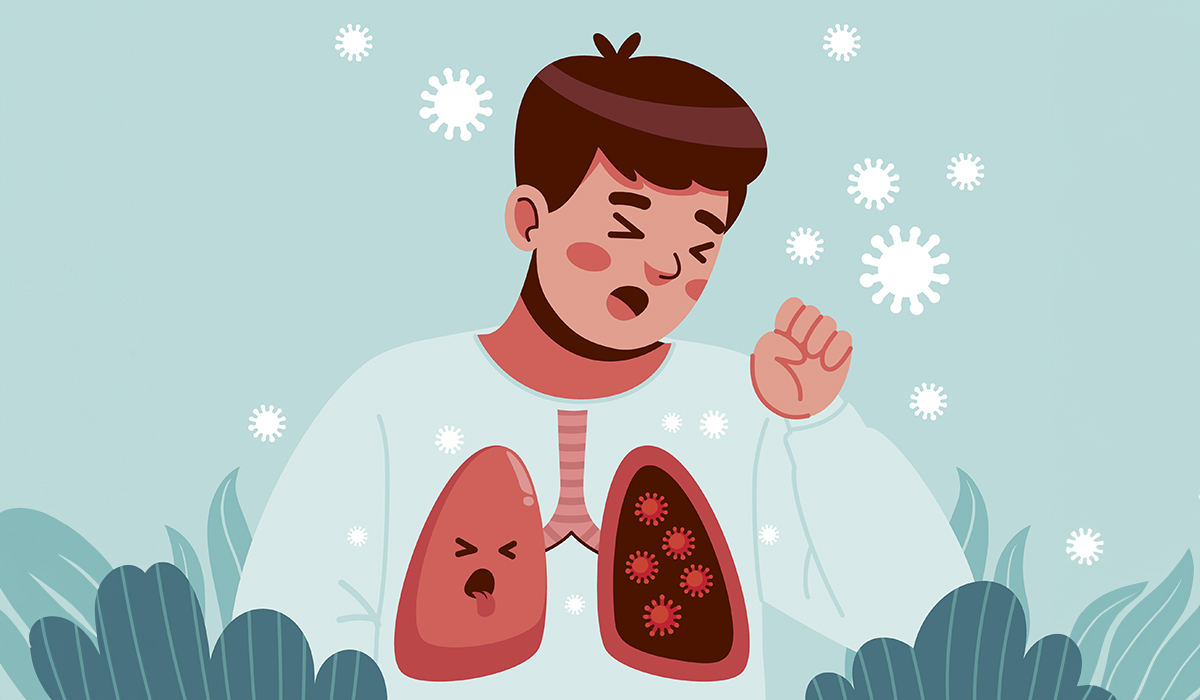
Lung Cancer begins in cells lining breathing entries, regularly starting with bronchial tubes or minor discuss sacs. It may be… read more »
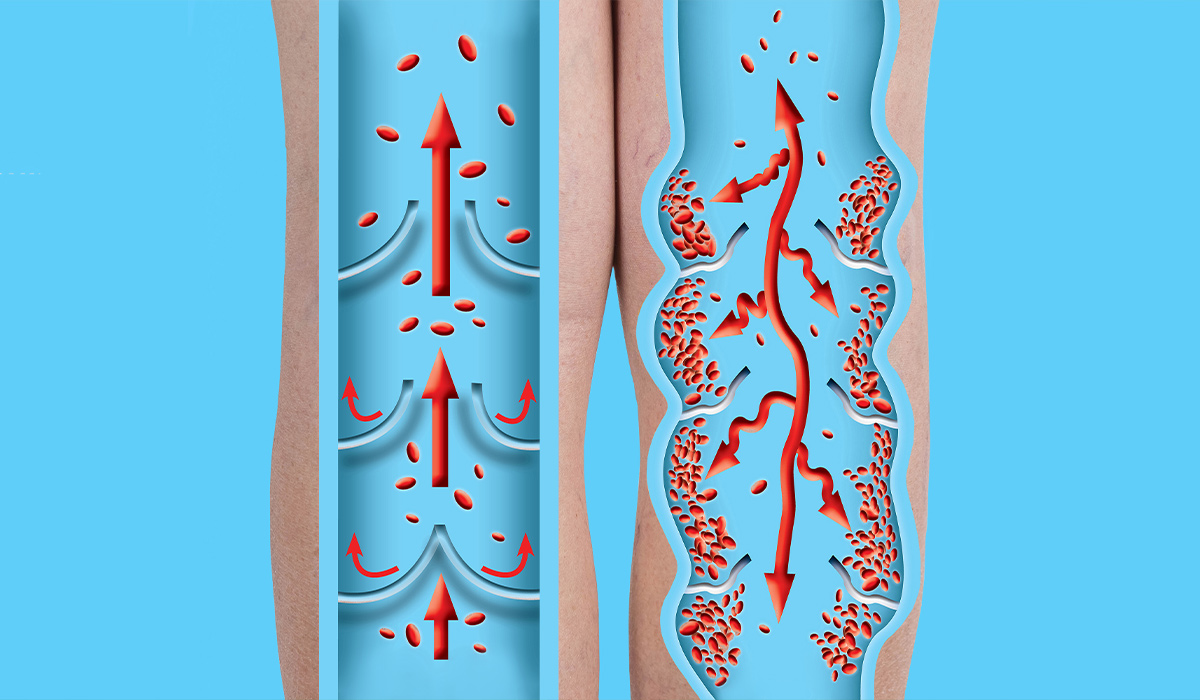
Do you know what are the symptoms of edema? How is it treated? Do you need a special diet if… read more »
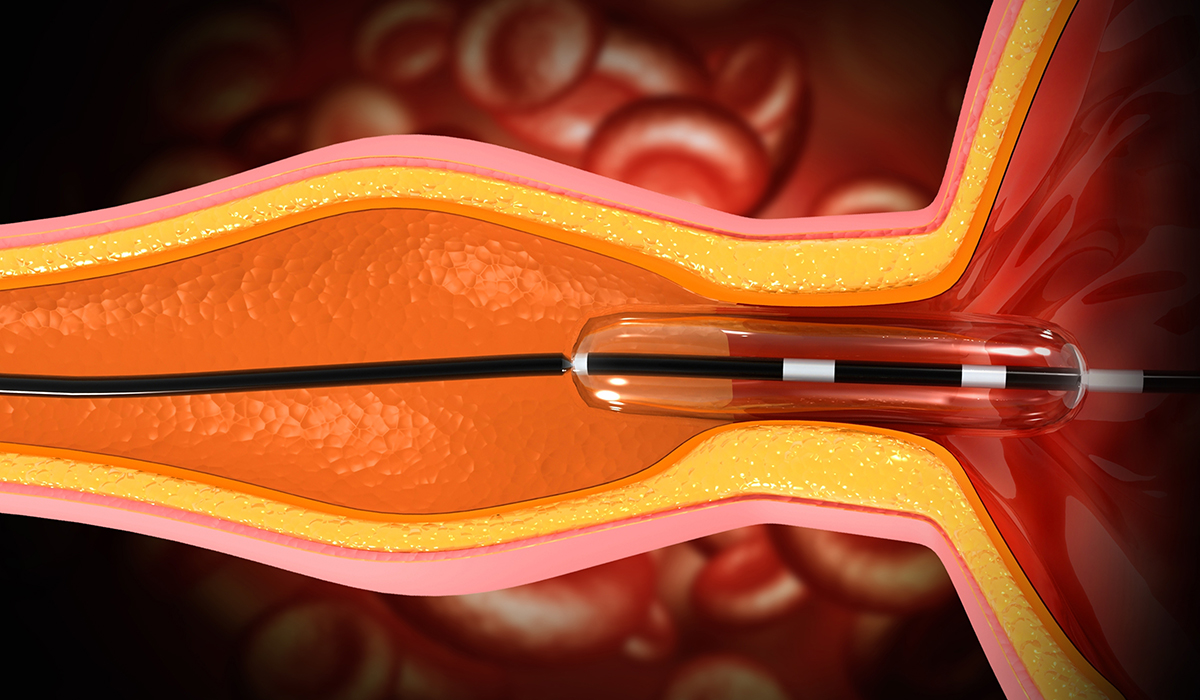
Angioplasty–in the medical world–is a procedure where the medical team widens narrow or blocked arteries. Customarily used to treat conditions… read more »